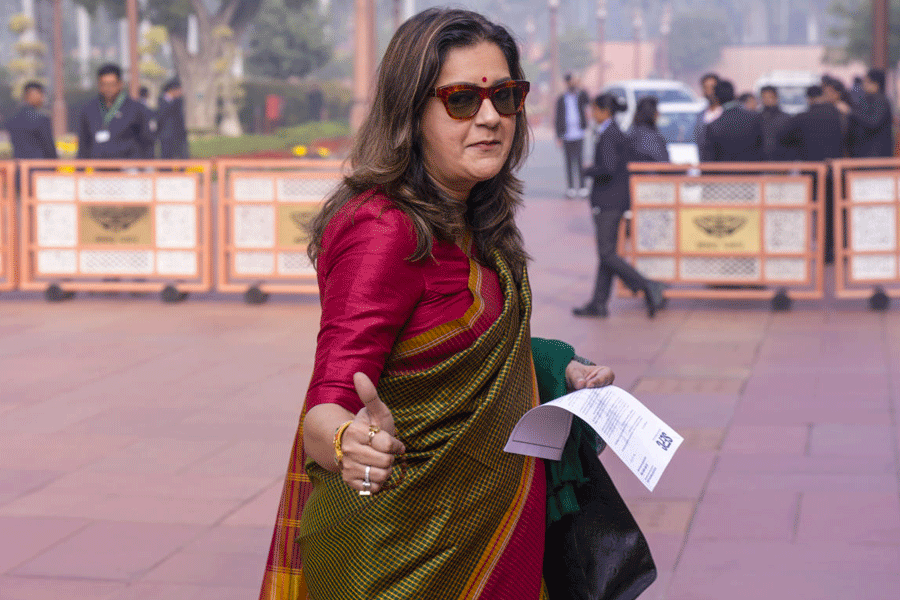 |
Textual traffic within the country in Bengali drama has mainly flowed outwards — translated into other Indian languages. Rarely has it reversed, for Bengali scriptwriters have only infrequently turned to other Indian plays as sources. This does not indicate the qualitative superiority of Bengali theatre, but its superiority complex. Thankfully, the situation is changing, as younger directors themselves translate classics by Karnad and Tendulkar, even though these have had Bengali productions before.
Abanti Chakraborty has done Naga-mandala scrupulously for Ballygunge Swapnasuchana, except for a quite extraneous opening improvisation in which the group pretend at assembling and interacting informally before moving seamlessly into Karnad’s prologue. But for the rest, she stays true to his revised edition, down to the alternative endings, which make her version more accurate than the last one in Bengali, by Pratyay in 2010.
Of the current generation, Chakraborty figures among the leaders in physicalizing the text; she shows a genuineness in her work with bodies that in most other hands degenerates into a superficial gimmick or mere gymnastics. Given her style, she could not have found better performers of sexual intimacy than Anirban Bhattacharya and Turna Das (picture), who complement each other gracefully. But their acting could improve with some old-guard Method approaches to psychological characterization, for she has imposed on them Anne Bogart’s “viewpoints” system, the theatrical equivalent of sampling. Are we as fragmented as postmodern America to need this? In contrast, Tomali Kakkad presents a more realistic portrait of the blind old Kurudavva. The stage décor and live percussion are attractive but not particularly novel, even for Bengali theatre.
A spinoff band of Nandikar members, who call themselves Frankly Speaking, have rendered Tendulkar’s Mitrachi Goshta outing lesbianism as Som ebang Som — a somewhat inexplicable title compared to its predecessor, Theatron’s Mitrapuran (2007). However, director Antara Banerjee’s translation is otherwise faithful; in this case, too much so, because she should cut anachronisms relating to the 1980s, such as the stigma attached to girls smoking.
Lead actress as well, Banerjee overextends. She plays Som effectively as a tomboy, but she required a more experienced eye to direct herself. Her costume, and the general design by Rimi Majumder Haldar, just do not appeal, defying the original stage directions. Incredibly, Som wears one outfit almost right through, like some other characters, which surely does not mean anything symbolical, and instead looks plain dowdy. Haldar is much better in acting, as the girl Som falls for. Still, we welcome another group that may bring fresh ideas to Bengali theatre.











